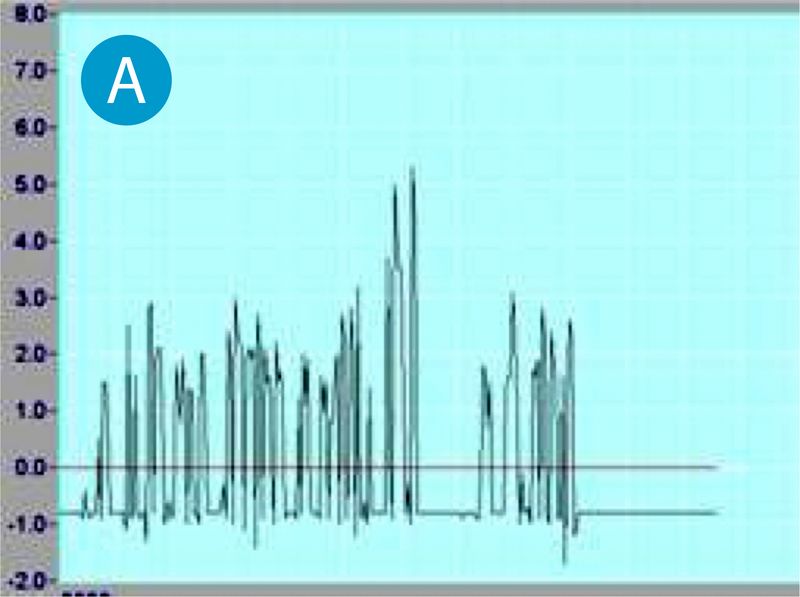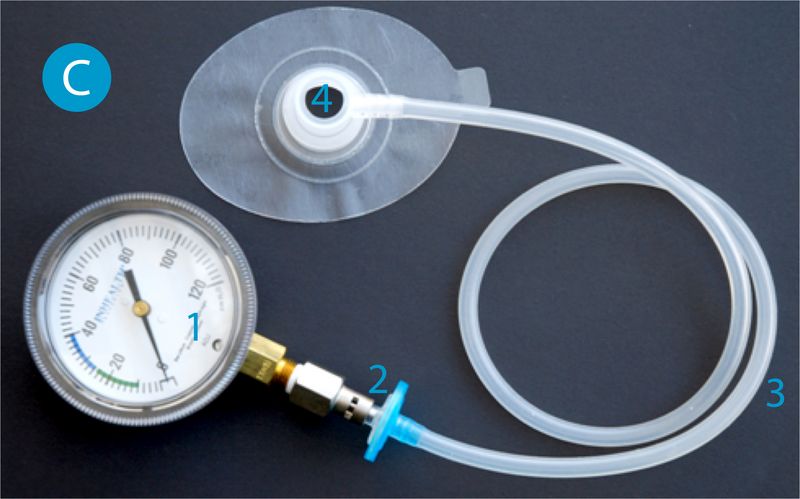Biofeedback manometer
There are often cases of patients whose tracheostoma plaster or button is unable to cope with the blowing pressures that occur when speaking. This happens particularly often when a tracheostoma valve is used, as there is no finger to provide the stabilizing pressure on the tracheostoma. In addition to the optimization of the adhesive technology, a reduction in the blowing pressure is also to be considered. The blowing pressure is the pressure that builds up in the wind pipe whilst speaking, and which the tracheostoma plaster or button has to withstand permanently. This blowing pressure differs from patient to patient and situation to situation, and is also determined by the speaking character. Often, and for no apparent reason, the patient uses significantly more blowing pressure than is actually necessary. More blowing pressure does not automatically mean more volume of the artificial voice.
If this is suspected, then the blowing pressure can be measured (fig. A and B).
When measuring the blowing pressure (fig. A and B), there is a clear difference, especially in the comparison of the maximum levels.
Both of the examined patient spoke clearly, so reducing the blowing pressure of the patient with reading B is to be desired.
Reducing the blowing pressure is difficult without receiving feedback whilst speaking. A biofeedback manometer was therefore designed for this purpose (fig. C). The Blom-Singer® Manometer Kit consists of a manometer (1) with a scale of 0-120 cmH20, a filter (2) to protect the manometer and a connecting hose (3) with a 22-mm connector and an opening (4) for digital occlusion of the tracheostoma.
To obtain biofeedback training, the patient places the 22-mm connector of the Manometer Kit on his tracheostoma plaster and talks while observing the readings on the scale. He can now produce just the amount of pressure that he actually needs to talk, see his results on the scale, and thus become accustomed to talking with less blowing pressure.



